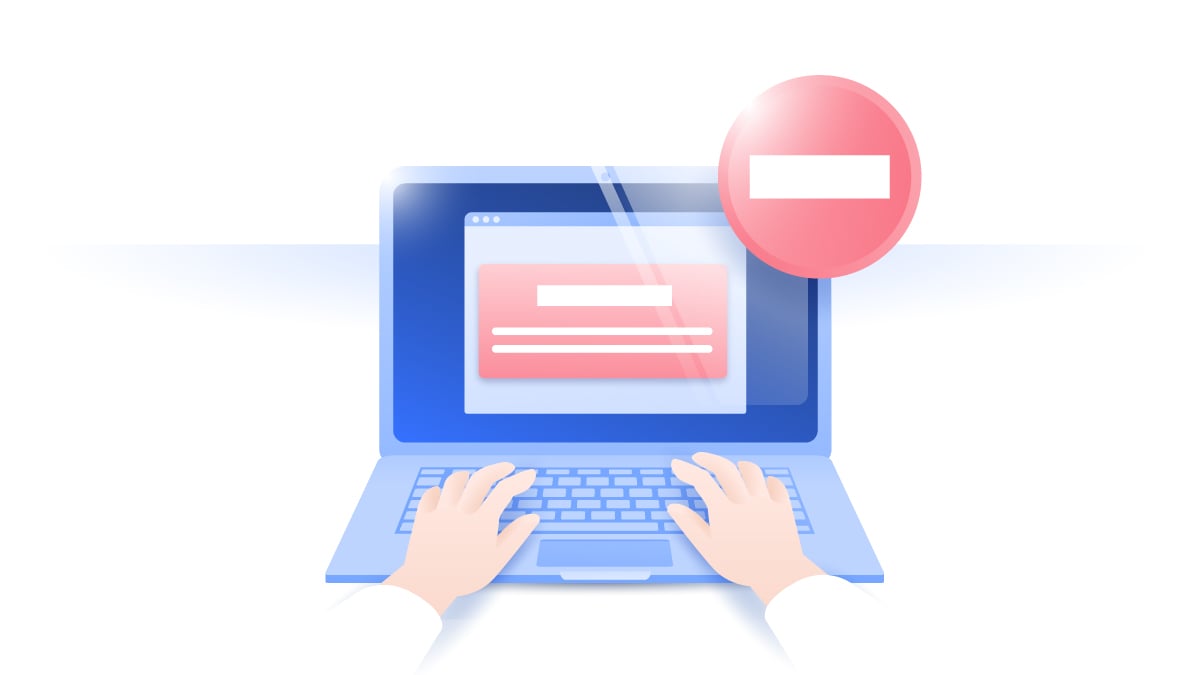What is a hoax in the digital world?
Social media channels are hardly monitored, so anyone can post (almost) anything on them. It’s getting hard to separate truth from fiction, so messages such as “Mark Zuckerberg will share his millions with you if you forward this message” are becoming common – and some even believe them. These, however, are hoaxes. Find out what hoaxes are, how to recognize them online, and what to do when you see one.

What is a hoax?
A hoax is a message that deceives people into thinking that something is true when it isn’t. It could be a fake message telling you that your device is infected with malware and the only way to remove it is to send it to your friends, click a link, or download some sort of software.
Hoaxes can be rumors, urban legends, pseudoscience, or April Fools’ stories that are accepted as truth. Back in the 17th-century, to hoax meant “to cheat.” The essence of the word hasn’t changed much since.
How to recognize a hoax
Hoaxes spread like viruses because they play with strong human emotions such as greed and pride. The scammer usually creates a story and uses emotional language. They can use vague information to hide their lies or use fake sources to lend a false sense of credibility or authority.
The next step to get you hooked is to create a sense of urgency. Usually, the scammer will ask you to forward the message to other people or download bogus software. They can highlight the “consequences” if you don’t do as they’ve asked.
Hoaxes in the digital world
There are many types of hoaxes. Here’s what they look like in the digital world:
1. Hoax emails
Hoax emails are usually used as bait in social engineering attacks and aren’t really dangerous unless you act upon them. For example, they can be used as a phishing attempt to convince you to click on a spoofed URL or download a suspicious document. This can then be used to steal your personal information like logins, passwords, and credit card details. It might also convince you to delete supposedly dangerous system files that are actually key to keeping you secure.
2. Hoaxes on social media
Hoaxes can spread at a tremendous rate on social media. People don’t question the content of the posts and messages they see and instantly share them with their friends. Such hoaxes can’t do much harm if you don’t act upon them or spread them even further. But how can you recognize one?
A great example could be a message posted on your wall saying “Your computer is infected with a virus. It will delete all your files if you don’t resend this message to 20 friends.” False chain letters like these prey on people using a sense of urgency and fear. Always question them!
It’s very unlikely that someone posting this on your wall would have access to your computer and would be able to tell whether you’ve got a virus or not. Even if your device is infected, the virus sure won’t disappear simply because you forwarded a bogus message on to your friends.
3. Hoax software
However, the most dangerous of them all is hoax software, which internet users tend to download voluntarily. So what is a virus hoax and how do people get it?
Computers get overloaded with temporary data, documents, and bloated caches. Over time, this decreases the performance of your device. Therefore, some users look for software to help them solve this problem. Unfortunately, if you don’t know what you’re looking for, you might download adware or a Trojan instead of helpful software.
Most often, people come across such software through Google Search, Google ads, web banners, or web pop-ups. The latter are particularly dangerous as they might scare people with virus warnings and will promise to fix the problem only if you download their software.
Others might completely block your screen, not letting you go back or switch tabs. They will then ask you to enter a specific code to get rid of the blocker, which you won’t have, or will let you give them access through remote-control software.
How to protect yourself from a hoax
Hoaxes can spread like wildfire, so it’s difficult to protect yourself from seeing or receiving one. However, remember that hoaxes cannot do any harm to you if you do not act upon them. Before you click on suspicious links from a spam email or get tempted to download unknown software, consider:
- Taking the information with a pinch of salt. Fact check it if you can.
- If you’re leading an organization, educating your team about recognizing a hoax is a great first step. Penetration testing is an effective way to toughen up their defenses.
- Looking for unusual wording that is too casual (like ‘ancient’ to describe how old your software is instead of ‘old’).
- Tossing the message if it’s a chain letter.
- Not giving your contact details to every single website you visit.
- Using a good antivirus.
- Closing suspicious pop-ups and not clicking on any links, especially if they try to look like an anti-virus message.
- Using ad blockers and privacy extensions that will block malicious banners, ads, and popups.
Want to read more like this?
Get the latest news and tips from NordVPN.